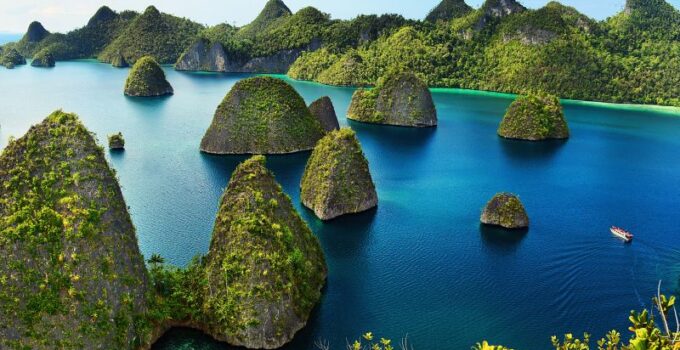Imagine a place where the sea seems to whisper in shades of turquoise, emerald, and cobalt; where coral reefs orchestrate an ancient ballet beneath crystalline waves, and every dive or snorkel feels like stepping into a living painting. That’s the enchantment of Raja Ampat, tucked away in Indonesia’s far east, where the ocean truly breathes in color. If you’re drawn to unexplored islands, shimmering reefs, and encounters that still feel raw and real, this is where your compass should point.
Page Contents
The Geography and Spirit of Raja Ampat
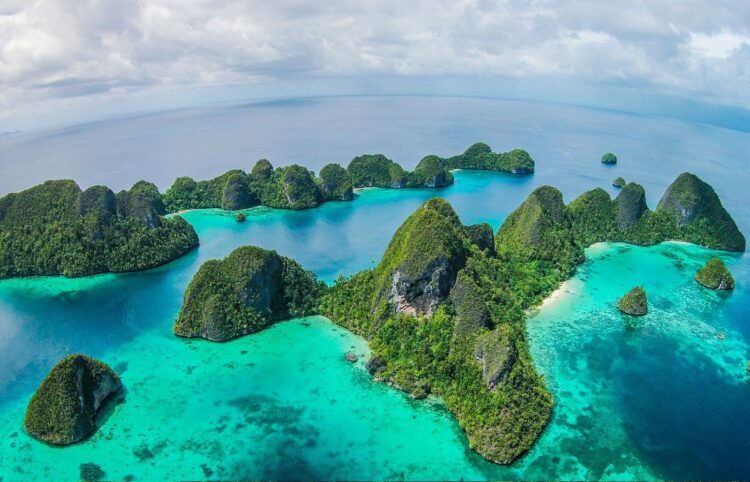
Source: papuaexplorers.com
Raja Ampat means “Four Kings” – a poetic name for the four main islands of Waigeo, Misool, Salawati, and Batanta. Around them, more than 1,500 smaller islets and lagoons shimmer like scattered emeralds across the sea. Remote but welcoming, this archipelago sits at the meeting point of the Pacific and Indian Oceans, a crossroads that shaped both its culture and its unmatched marine life.
If you want to explore this vast, secluded paradise in the most immersive way, a luxury liveaboard Raja Ampat is the dream choice. Picture waking up to a different turquoise bay every morning, diving into clear lagoons before breakfast, and sailing between uninhabited islands under star-filled skies. It’s not just travel, it’s a slow dance with nature’s finest masterpiece.
Beneath the Surface: A Living Kaleidoscope
Slip below the waterline, and you’ll find yourself in the beating heart of the Coral Triangle, the most biodiverse marine region on Earth. Raja Ampat’s reefs host more than 600 species of coral and 1,500 species of fish, including manta rays, pygmy seahorses, and reef sharks. Scientists often describe it as the ocean’s nursery, where life begins in every imaginable shade.
Divers call this region a “living kaleidoscope.” Soft corals sway like curtains in an underwater breeze, while schools of fusiliers flash silver against sunbeams. Even snorkelers drifting near the surface witness an orchestra of color that feels surreal, as if the sea is painting itself anew with every current.
Key Marine Highlights
- Over 600 hard coral species recorded – nearly 75% of the world’s total.
- More than 1,500 fish species in the area.
- Manta cleaning stations near Misool and Dampier Strait.
- Shallow reefs rich enough for world-class snorkeling without tanks.
Did you know? Raja Ampat’s reefs are considered among the most resilient on Earth due to strong ocean currents that disperse heat and pollution naturally, helping corals recover from bleaching faster than in other regions.
Above the Water: Islands, Culture, and Scenic Drama
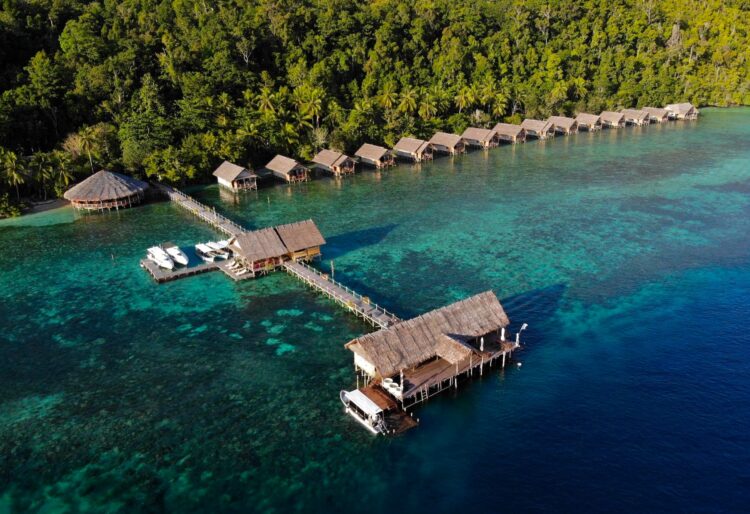
Source: papuaexplorers.com
The drama doesn’t end underwater. Jagged limestone cliffs rise from calm turquoise bays, and dense tropical forests spill right down to the sand. Local villages, made of thatched huts and wooden jetties, rest quietly along the shoreline. Life moves at the rhythm of the tides – fishermen mending nets, children paddling canoes, and women weaving mats under coconut trees.
Raja Ampat isn’t a single destination; it’s a tapestry of moods. Waigeo is lively and serves as a main entry point, Misool is home to remote reefs and sculpted karst towers, while Salawati and Batanta feel timeless, with fewer visitors and stronger local character.
| Island | Highlights | Vibe |
| Waigeo | Central base, multiple dive sites, easy transfers | Adventurous but accessible |
| Misool | Dramatic karst formations, hidden lagoons, upscale resorts | Quiet and exclusive |
| Salawati | Wildlife, mangroves, village visits | Authentic and local |
| Batanta | Waterfalls and rainforest treks | Wild and serene |
The magic lies in the contrast: moments of solitude on an untouched beach balanced with evenings spent sharing stories and laughter in a local village.
Getting There and Getting Around
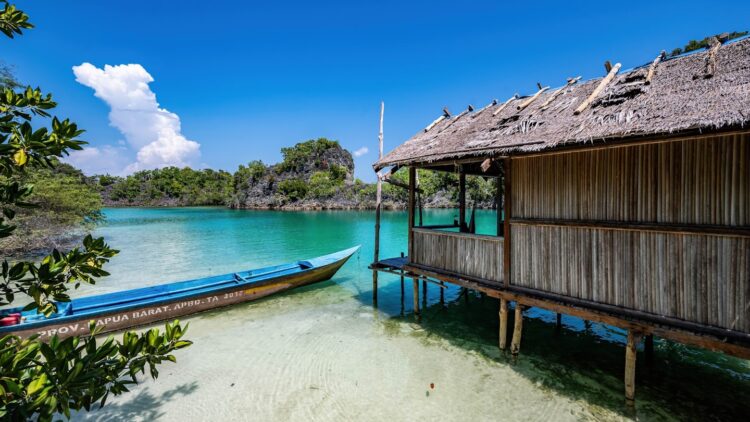
Source: lonelyplanet.com
Raja Ampat sits far from Indonesia’s main tourist trails, so getting there takes planning, but that’s part of its charm. The main gateway is Sorong, a city in West Papua. From there, travelers take a ferry or speedboat to Waisai, the capital of Raja Ampat Regency, before hopping between islands by boat.
Practical Travel Tips
- Best time to visit: October to April, when seas are calm and visibility peaks.
- Permits: Visitors must pay a marine park fee to support reef conservation.
- Stay options: Local homestays for cultural immersion, eco-resorts for comfort, or luxury liveaboards for complete exploration.
- Connectivity: Wi-Fi is limited – consider this your cue to disconnect.
- Reef-safe travel: Avoid sunscreens with harmful chemicals, never touch corals, and minimize plastic use.
Every island has its rhythm. Try spending at least a few nights in different parts – the contrast between Misool’s solitude and Waigeo’s liveliness tells the true story of Raja Ampat.
The Must-See Experiences
Raja Ampat isn’t just about diving; it’s about perspective, both literal and emotional. Whether you’re an underwater explorer or a sunset watcher, these moments stay with you.
- Wayag’s Panoramic Viewpoints
Climb the limestone peaks overlooking Wayag Lagoon. The view, jade karsts rising from turquoise water is Raja Ampat’s signature image. - Cape Kri Dive Site
Known for record-breaking marine diversity, this site lets you drift alongside swirling fish clouds, reef sharks, and colorful coral gardens. - Piaynemo Lagoon
A smaller cousin of Wayag, but easier to reach. The stairs lead to a breathtaking panorama worth every drop of sweat. - Village Homestay
Experience Papuan hospitality firsthand. Eat grilled fish by lamplight, learn local words, and listen to the sea’s hush at night.
Slow down. Raja Ampat rewards patience and every sunrise feels like the start of a new world.
Sustainability and Conservation Efforts
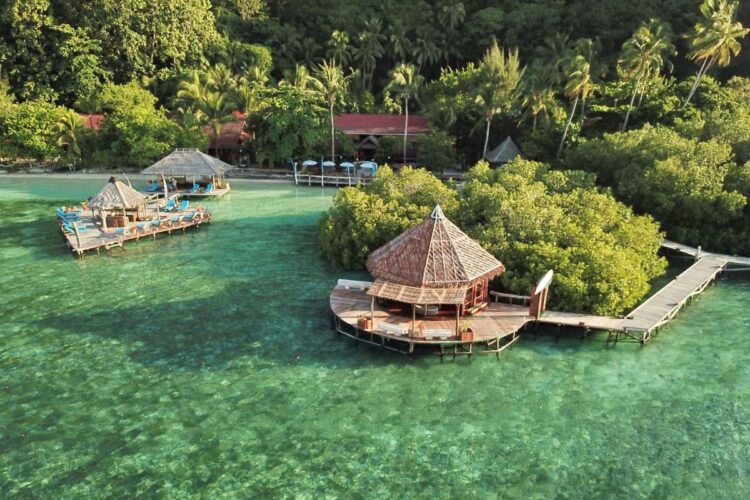
Source: manadosafaris.com
Raja Ampat’s glowing reefs are both a gift and a responsibility. Local communities and NGOs have worked tirelessly to protect this marine Eden. Fishing zones are managed through traditional laws known as sasi, which temporarily close certain areas to allow marine life to regenerate.
But tourism can still strain fragile ecosystems. To travel responsibly:
- Choose eco-certified resorts or liveaboards that follow reef-safe practices.
- Limit plastic and bring reusable bottles.
- Avoid single-use plastics during island transfers.
- Support local businesses, each dollar spent locally helps sustain communities that protect the reefs.
Many of Raja Ampat’s marine rangers are former fishermen who turned to conservation. They now patrol protected areas to ensure future generations can still fish sustainably.
Costs, Comfort, and Travel Style
Raja Ampat is an experience measured in memories rather than money. Still, there’s flexibility in how you explore it.
| Travel Type | Accommodation | Experience | Estimated Budget per Day |
| Homestay Traveler | Simple bungalows, local meals | Cultural immersion, snorkeling | $60–$120 |
| Eco-Resort Guest | Mid-range comfort, dive packages | Guided dives, scenic tours | $200–$400 |
| Luxury Liveaboard Explorer | All-inclusive yacht with crew | Private dives, remote access | $500+ |
Subnote: Bring enough cash (in Indonesian rupiah), as ATMs are limited to Sorong and Waisai. Many islands don’t accept cards.
Traveler Tips for a Better Journey
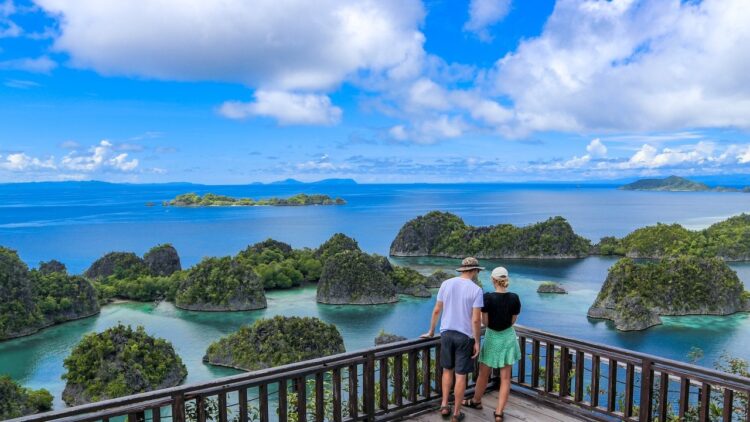
Source: bimp-eaga.asia
- Rise early. The best light for photos and snorkeling is between 6 AM – 9 AM.
- Keep expectations flexible. Island weather can shift quickly, so plan buffer days.
- Learn a few phrases. “Selamat pagi” (good morning) and “terima kasih” (thank you) go a long way.
- Stay curious. Locals are often eager to share their traditions — ask about cooking, fishing, or weaving.
- Take breaks from the camera. Some beauty deserves to be seen, not captured.
Did you know? Even professional divers say the intensity of Raja Ampat’s colors is best viewed without a camera flash, natural light brings the real magic.
Why Raja Ampat Should Be on Your Bucket List
Raja Ampat isn’t about ticking boxes or chasing Instagram fame. It’s about feeling small in the face of something profoundly alive. The reefs pulse, the islands breathe, and the sea sings in a thousand tones of blue.
You’ll leave with salt in your hair, sand on your skin, and a lingering sense that you’ve glimpsed something primal, how the ocean might have looked before the world grew busy. It’s one of those rare destinations that remind you travel isn’t about escape, but connection.
When you finally watch the sun sink behind a forested karst island, turning the sea into molten gold, you’ll understand: this is where the ocean breathes in color and if you listen closely, it might just change the way you see the world.

